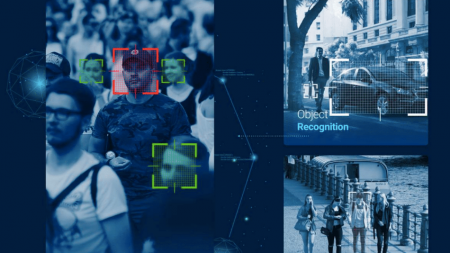Difference between revisions of "Surveillance Technologies"
| Line 44: | Line 44: | ||
==Affects== | ==Affects== | ||
| − | People now have the potential to be tracked online and in person, and can never be sure if they are being tracked. Because the act of turning people’s experiences into data modifies human behavior,<ref>Profile Books Ltd ''The Age of Surveillance Capitalism'' Shoshana Zuboff 2019</ref> people might be more careful about what they search online, purchase, or what they do in public spaces, which is manipulating their autonomy | + | People now have the potential to be tracked online and in person, and can never be sure if they are being tracked. Because the act of turning people’s experiences into data modifies human behavior,<ref>Profile Books Ltd ''The Age of Surveillance Capitalism'' Shoshana Zuboff 2019</ref> people might be more careful about what they search online, purchase, or what they do in public spaces, which is manipulating their autonomy. |
== References == | == References == | ||
Revision as of 16:05, 26 March 2019
Surveillance Technology is the use of computer equipment to monitor people’s behaviors and actions. It is often implemented by companies and organizations with the goal of increasing safety, efficiency, or cost-effectiveness. These technologies are becoming more universal and changing rapidly in the 21st century. This presents issues because policy regarding surveillance technology is unable to keep up with its growth.[1] Subjects of surveillance technologies are often unaware and unconsenting, and technologies themselves are subject to misuse such as targeting, voyeurism, and violation of privacy.Contents
Types of Surveillance Technologies
There are many types of surveillance technologies, which are often used in combination with one another to conduct comprehensive monitoring of an area either in the real world or in the infosphere. These technologies can be used to monitor people in public places, employees in a workplace, criminal suspects, or anyone else of interest. Each technology presents the user with its own ethical issues.

Video Surveillance
Video surveillance is one of the most commonly used and well-known surveillance technologies. Its uses vary from monitoring of high risk areas (i.e. government buildings) to monitoring personal property and everything in between. Video surveillance is meant to keep a watchful eye over an area to keep it safe. Video cameras allow many areas to be monitored at once by the same person, and eliminate physical barriers that often obscure the view of human security guards. Problems arise when public spaces become “blanketed”[4] with video cameras. Many public spaces, such as subways in NYC, have hidden cameras[5] which is problematic because when individuals don't know they are being watched their privacy is violated. Video surveillance technology is easily misused as a tool for voyeurism, especially because it has become so accessible in recent years.[6]
Police body cameras are a form of video surveillance. They are used to oversee police actions and have been implemented in recent years in order to combat police violence. Similar to security cameras, they present an issue of people being unaware their actions are being recorded.
Big Data
Corporations collect big data about individuals, some of whom even construct profiles about individuals (i.e. data brokers). This information about people's online habits and behaviors is collected to be sold to other businesses who want to know about consumers, which causes many privacy issues. Data mining is a violation privacy, even if the information is public, because there is no context for a subject's actions.[7] This violation can lead to targeting of vulnerable populations by large corporations and others who obtain such data.
Biometrics
Biometrics are ways to identify someone based on their physical characteristics such as fingerprints, DNA, eyes, voice, face, etc. Many technologies have been developed to recognize these characteristics. The FBI has a “Next Generation Identification” (NGI) system[8] which is a bank of biometric information about individuals that allows them to use someone's physical characteristics to identify them. For example, if someone is caught on a surveillance camera, facial recognition technology can be used alongside their NGI database to identify the subject. Social media companies[9] and other technology companies[10] have also been developing and implementing these tools to increase legitimacy in authentication. The consequences of these new technologies cannot be predicted, but they increase the ability to identify and track individuals based on their physical identity. Because aspects of one's physical identity (i.e. fingerprint) do not change like other identifying characteristics (i.e. phone number), this locks people into their identity permanently.[11] This is a violation of peoples autonomy and therefore their privacy.
Domestic Drones
Domestic drones are used in combination with other technologies to surveil people without their knowledge. Drones can be equipped with microphones, GPS tracking, infrared detection, and facial recognition to detect and track people in many different circumstances with great discretion, usually going unnoticed by the subject. This is a violation of contextual privacy because even if someone is acting a certain way in a public space, there is no context of their life included in the surveillance.

Radio Frequency Identity (RFID) Chips
RFID chips are placed on or on physical objects to allow for contactless authentication. Examples include electronic toll collection passes, passports, and contactless entry keys, and they allow for users to be identified and tracked without their knowledge. Because subjects are not in control of the collection of this information, people's privacy is violated by tracking them this way.
Stingray Tracking Devices
Stingray tracking devices are cell phone surveillance devices that act like cell towers and send out signals to cell phones to get their location and identifying information. They are often used by law enforcement in solving crime in order to geolocate people. When identifying information is collected about a subject without their knowledge, their privacy is violated.
Advantages
Surveillance technologies aid in solving crimes and can even deter criminals. They are more effective than traditional surveillance methods because they are not disrupted by distance or physical barriers. They are less labor intensive and often less expensive than traditional surveillance methods. Data generated by surveillance technology can be shared easily, and a reduced informational friction[13] allows for this information to be used effectively by multiple people in a time of need.
Ethics
Privacy
The most prominent issue with surveillance technology is its violation of privacy. Humans have control over how we present ourselves based on the context we are in and what we know about our surroundings. The possibility of constant surveillance of someone without their knowledge violates the subject’s privacy because you take away their control over how they are portrayed.[14] The limitation theory of privacy states that privacy is the area that others cannot get to,[15] but if you’re have the potential of being constantly watched, you will never have any privacy.
Voyeurism
Surveillance technology has created opportunity for voyeurism. There have been incidents of security cameras being used as a tool for voyeurism, a misuse of technology designed to protect people. Many parties who use surveillance technology are facing legal issues, often because there is not up-to-date legislation to guide their use. When subjects being monitored are completely unaware they are being tracked and watched, they have not consented to it. Parties using these technologies should be open about their uses to protect the rights of the people they are surveilling.[16]
Bias
Surveillance technologies are never neutral because they are designed by humans who have their own biases. These biases, or "embedded values,"[17] effect the way technology surveils. For example, Amazon's new facial recognition technology, Rekognition, has been reported to falsely match photos of people of color to mugshot databases at a higher rate than it falsely matches photos of white people.[18] The software has learned this racial bias from its creators and the digital world it interacts with. While it would seem that technological analysis would be less biased than human analysis, the implementation of such technology into society would amplify existing racial prejudice instead of eliminating it.
Anonymity
Surveillance technology decreases and can even eliminate people's anonymity online and in the physical world. As people's online interactions are tracked, turned into data, and sold, they are no longer anonymous online. As public spaces are increasingly blanketed with video monitors and contactless scanning devices, people can be unknowingly tracked as they move through their daily lives. These aspects of surveillance technology and its integration into society don't allow anyone to slip by unnoticed, thereby eradicating anonymity in the 21st century.
Affects
People now have the potential to be tracked online and in person, and can never be sure if they are being tracked. Because the act of turning people’s experiences into data modifies human behavior,[19] people might be more careful about what they search online, purchase, or what they do in public spaces, which is manipulating their autonomy.
References
- ↑ The Information Society "The Information Society and Its Philosophy: Introduction to the Special Issue on The Philosophy of Information, Its Nature, and Future Developments" Luciano Floridi 2009
- ↑ image source
- ↑ image source
- ↑ ACLU
- ↑ New York Post "The Hidden Cameras in NYC's Subways" Gary Buiso 2015
- ↑ NBC News "Tiny Cameras, Big Crimes: Peeping Toms Go High-Tech" 2014
- ↑ Stanford University Press Privacy In Context Hellen Nissenbaum 2009
- ↑ FBI "Next Generation Identification (NGI)"
- ↑ USA Today "Facebook wants to save your face. Should you say yes to facial recognition?" Jessica Guynn 2018
- ↑ Apple inc. "About Face ID advanced technology" 2018
- ↑ opusresearch "Biometrics – the Good, the Bad and the Reality" Ravin Sanjith 2018
- ↑ image source
- ↑ Oxford University Press The 4th Revolution Luciano Floridi 2014
- ↑ Information Technology and Moral Philosophy "Plural Selves and Relational Identity" Dean Docking 2008
- ↑ Ethics and Information Technology "Self-exposure and exposure of the self: informational privacy and the presentation of identity" David Shoemaker 2010
- ↑ ACLU
- ↑ Cambridge University Press "Values in technology and disclosive computer ethics" Philip Brey 2010
- ↑ [ACLU "Amazon’s Face Recognition Falsely Matched 28 Members of Congress With Mugshots" Jacob Snow 2018]
- ↑ Profile Books Ltd The Age of Surveillance Capitalism Shoshana Zuboff 2019
